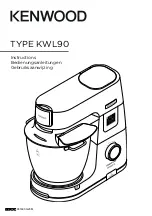
14-10
DSP56305 User’s Manual
MOTOROLA
CYCLIC CODE CO-PROCESSOR
CCOP Programming Model
during this phase). After loading the input data into the CDFR, the user should load this
counter with the number of processing cycles desired. Starting with the cycle after the
input phase is completed, the Run Counter decrements itself each cycle until it reaches
zero. Each cycle the Run Counter is non-zero, the CFSRs perform a shift.
14.4.2.3
Output Counter (OC[6:0])—CCNT Bits 22–16
The Output Counter (OC[6:0]) specifies how many bits in the CFSRs are to be sent to the
CDFR as output (the range is 0 to 120). After loading the input data into the CDFR, the
user should load this counter with the number of valid bits to be shifted (one bit at a
time) into the CDFR as output. Starting with the cycle after the run phase is completed,
the Output Counter decrements itself each cycle until it reaches zero. Each cycle the
Output Counter is non-zero, the outputs from all four CFSRs are XORed together and
the resulting bit is shifted into the CDFR as output. The Stepping function is enabled
during the Output Counter operation. When the Output Counter reaches zero, the
CCOP generates an interrupt indicating to the DSP56300 core that it has finished
processing.
14.4.2.4
Continuous Mode (CM)—CCNT Bit 23
The Continuous Mode (CM) bit enables the CCOP to operate continuously. When CM is
cleared, the CCOP operates on input data blocks of length defined by the Input Counter,
then it passes to the run and output phases according to the Run Counter and Output
Counter respectively. When CM is set, the Input Counter, Run Counter and Output
Counters are ignored and the CFSRs operate in a continuous mode, i.e. upon receiving a
new data word, it is shifted into the enabled CFSRs. Only the input phase is activated
when CM is set, while the run and output phases are disabled. The continuous mode can
be used, for example, to calculate a CRC syndrome value of a large data block
transferred to CCOP via core or DMA.
14.4.3
Step Function Registers
The Step Function Registers perform the step functions, one register (CSFS) defining the
address to the Step Function Table, the other two (CSFTA and CSFTB) containing the
Step Function Table. The eight words in this table are written at initialization. Each of the
four output bits of the table controls one CFSR, and is interpreted as shift (one) or
no-shift (zero) by the CFSR. The stepping function starts operation after the Input
Counter reaches zero, and stops after the Output Counter reaches zero (i.e., it is enabled
when the Run Counter and Output Counter are active).
14.4.3.1
Step Function Select Register (CSFS)
The Step Function Select Register (CSFS) is a 24-bit read/write register used to select
three bits from anywhere in the CFSRs. These bits form the address to the 8
×
4-bit Step
Function Table. The register is composed of three bit-sized subregisters (lettered A, B,
Summary of Contents for DSP56305
Page 34: ...xxxii DSP56305 User s Manual MOTOROLA ...
Page 40: ...xxxvi DSP56305 User s Manual MOTOROLA ...
Page 41: ...MOTOROLA DSP56305 User s Manual 1 1 SECTION 1 DSP56305 OVERVIEW ...
Page 58: ...1 18 DSP56305 User s Manual MOTOROLA DSP56305 Overview DSP56305 Architecture Overview ...
Page 59: ...MOTOROLA DSP56305 User s Manual 2 1 SECTION 2 SIGNAL CONNECTION DESCRIPTIONS ...
Page 98: ...2 40 DSP56305 User s Manual MOTOROLA Signal Connection Descriptions JTAG OnCE Interface ...
Page 99: ...MOTOROLA DSP56305 User s Manual 3 1 SECTION 3 MEMORY CONFIGURATION ...
Page 119: ...MOTOROLA DSP56305 User s Manual 4 1 SECTION 4 CORE CONFIGURATION ...
Page 144: ...4 26 DSP56305 User s Manual MOTOROLA Core Configuration JTAG Boundary Scan Register BSR ...
Page 145: ...MOTOROLA DSP56305 User s Manual 5 1 SECTION 5 GENERAL PURPOSE I O ...
Page 149: ...HOST INTERFACE HI32 MOTOROLA DSP56305 User s Manual 6 1 SECTION 6 HOST INTERFACE HI32 ...
Page 150: ...6 2 DSP56305 User s Manual MOTOROLA HOST INTERFACE HI32 ...
Page 259: ...MOTOROLA DSP56305 User s Manual 7 1 SECTION 7 ENHANCED SYNCHRONOUS SERIAL INTERFACE ESSI ...
Page 315: ...MOTOROLA DSP56305 User s Manual 8 1 SECTION 8 SERIAL COMMUNICATION INTERFACE SCI ...
Page 347: ...MOTOROLA DSP56305 User s Manual 9 1 SECTION 9 TIMER EVENT COUNTER ...
Page 376: ...9 30 DSP56305 User s Manual MOTOROLA Timer Event Counter Timer Modes of Operation ...
Page 377: ...MOTOROLA DSP56305 User s Manual 10 1 SECTION 10 ON CHIP EMULATION MODULE ...
Page 411: ...MOTOROLA DSP56305 User s Manual 11 1 SECTION 11 JTAG PORT ...
Page 430: ...11 20 DSP56305 User s Manual MOTOROLA JTAG Port DSP56305 Boundary Scan Register ...
Page 431: ...Filter Co Processor MOTOROLA DSP56305 User s Manual 12 1 SECTION 12 FILTER CO PROCESSOR ...
Page 471: ...VITERBI CO PROCESSOR MOTOROLA DSP56305 User s Manual 13 1 SECTION 13 VITERBI CO PROCESSOR ...
Page 522: ...13 52 DSP56305 User s Manual MOTOROLA VITERBI CO PROCESSOR References ...
Page 554: ...14 32 DSP56305 User s Manual MOTOROLA CYCLIC CODE CO PROCESSOR Configuration Examples ...
Page 555: ...MOTOROLA DSP56305 User s Manual A 1 APPENDIX A BOOTSTRAP CODE ...
Page 568: ...A 14 DSP56305 User s Manual MOTOROLA Bootstrap Code ...
Page 569: ...Equates MOTOROLA DSP56305 User s Manual B 1 APPENDIX B EQUATES ...
Page 589: ...MOTOROLA DSP56305 User s Manual C 1 APPENDIX C JTAG BSDL ...
Page 590: ...C 2 DSP56305 User s Manual MOTOROLA JTAG BSDL ...
Page 600: ...C 12 DSP56305 User s Manual MOTOROLA JTAG BSDL ...
Page 601: ...MOTOROLA DSP56305 User s Manual D 1 APPENDIX D PROGRAMMING REFERENCE ...
Page 602: ...D 2 DSP56305 User s Manual MOTOROLA PROGRAMMING REFERENCE ...
Page 661: ...Y MOTOROLA DSP56305 User s Manual Index 11 ...
Page 662: ...Y Index 12 DSP56305 User s Manual MOTOROLA ...
















































